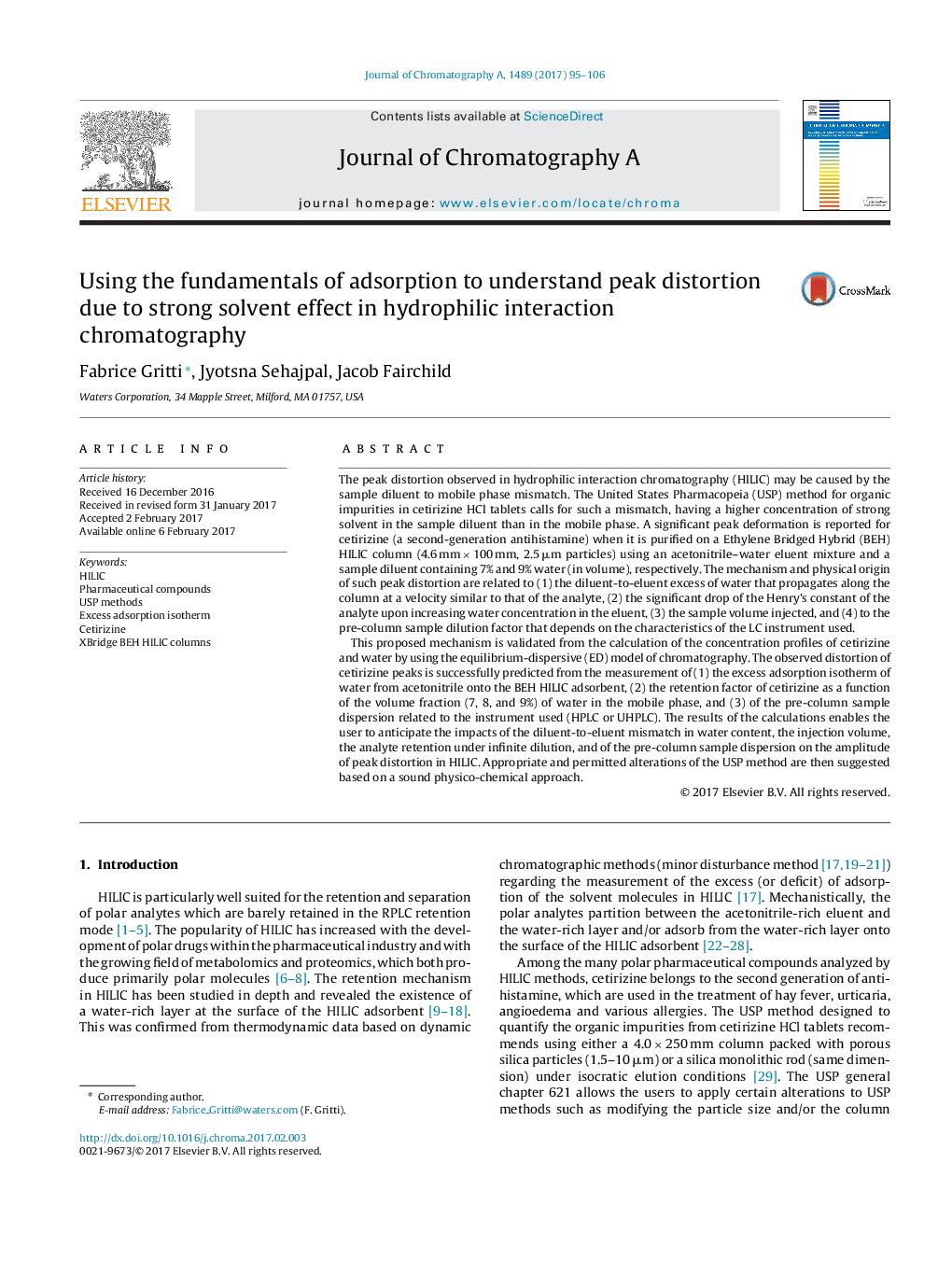| کد مقاله | کد نشریه | سال انتشار | مقاله انگلیسی | نسخه تمام متن |
|---|---|---|---|---|
| 5135462 | 1493437 | 2017 | 12 صفحه PDF | دانلود رایگان |

- Peak distortion in hydrophilic interaction chromatography is due to strong solvent effects.
- It is due to a diluent-to-eluent excess of water propagating along the column.
- It takes place when the analyte retention strongly depends on the water content.
- It occurs when the analyte retention is slightly larger than that of the water excess.
- This mechanism of peak distortion is fully confirmed by the calculation of peak profiles.
The peak distortion observed in hydrophilic interaction chromatography (HILIC) may be caused by the sample diluent to mobile phase mismatch. The United States Pharmacopeia (USP) method for organic impurities in cetirizine HCl tablets calls for such a mismatch, having a higher concentration of strong solvent in the sample diluent than in the mobile phase. A significant peak deformation is reported for cetirizine (a second-generation antihistamine) when it is purified on a Ethylene Bridged Hybrid (BEH) HILIC column (4.6 mm Ã 100 mm, 2.5 μm particles) using an acetonitrile-water eluent mixture and a sample diluent containing 7% and 9% water (in volume), respectively. The mechanism and physical origin of such peak distortion are related to (1) the diluent-to-eluent excess of water that propagates along the column at a velocity similar to that of the analyte, (2) the significant drop of the Henry's constant of the analyte upon increasing water concentration in the eluent, (3) the sample volume injected, and (4) to the pre-column sample dilution factor that depends on the characteristics of the LC instrument used.This proposed mechanism is validated from the calculation of the concentration profiles of cetirizine and water by using the equilibrium-dispersive (ED) model of chromatography. The observed distortion of cetirizine peaks is successfully predicted from the measurement of (1) the excess adsorption isotherm of water from acetonitrile onto the BEH HILIC adsorbent, (2) the retention factor of cetirizine as a function of the volume fraction (7, 8, and 9%) of water in the mobile phase, and (3) of the pre-column sample dispersion related to the instrument used (HPLC or UHPLC). The results of the calculations enables the user to anticipate the impacts of the diluent-to-eluent mismatch in water content, the injection volume, the analyte retention under infinite dilution, and of the pre-column sample dispersion on the amplitude of peak distortion in HILIC. Appropriate and permitted alterations of the USP method are then suggested based on a sound physico-chemical approach.
Journal: Journal of Chromatography A - Volume 1489, 17 March 2017, Pages 95-106